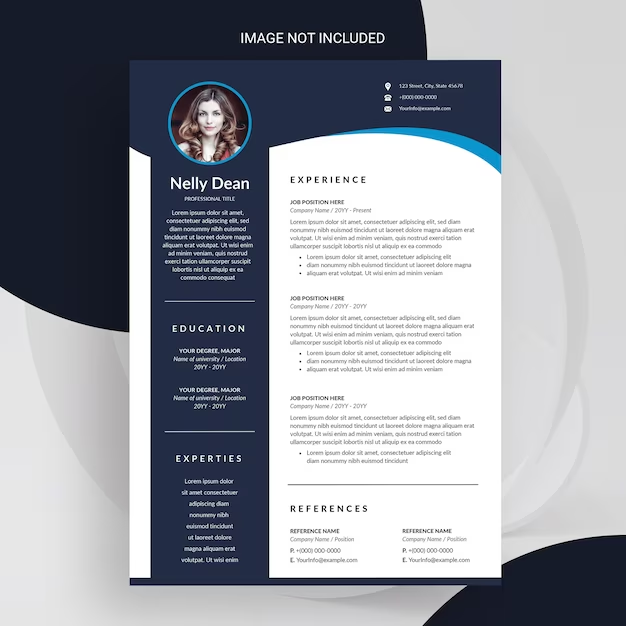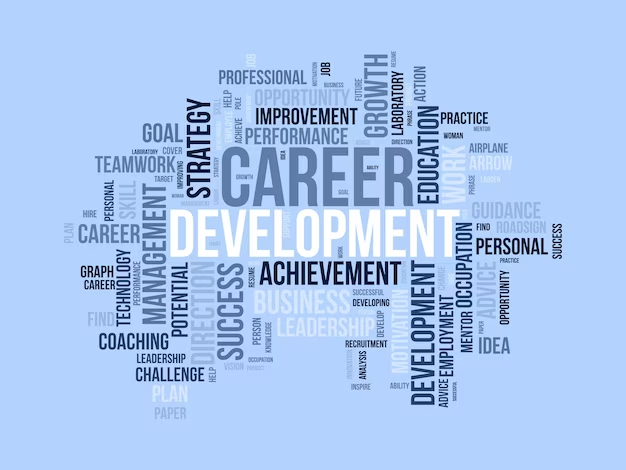Mastering the Art of Resume Writing: How to Create a Standout CV

Your resume is your first impression to potential employers, making it crucial to craft a well-written and professional document. A standout CV can greatly increase your chances of landing an interview and ultimately securing the job of your dreams. A resume showcases your skills, experience, and qualifications, highlighting what sets you apart from other candidates. By mastering the art of resume writing, you can create a standout CV that grabs the attention of hiring managers and leaves a lasting impression.
To begin, start by carefully reviewing the job description and requirements for each position you’re applying for. Tailoring your resume to the specific job application is essential in demonstrating why you are the perfect fit for the role. Identify the key skills and qualifications mentioned in the job posting and ensure that they are prominently featured in your resume. This will show employers that you have taken the time to understand their needs and are equipped to meet them.
Understanding the differences between a CV and a resume
Many people use the terms “CV” and “resume” interchangeably, but they are actually different documents with distinct purposes. A CV, or curriculum vitae, is a comprehensive document that provides an overview of your academic and professional background, including research, publications, presentations, and more. It is typically used in academia and research fields.
On the other hand, a resume is a concise summary of your skills, experience, and qualifications tailored to a specific job application. Resumes are typically used in the business world and are limited to one or two pages. Understanding the differences between a CV and a resume is important when crafting your application materials, as you want to ensure you are using the appropriate format for your industry and the position you are applying for.
Key components of a standout resume
When creating a standout resume, there are several key components that you should include to make sure your document stands out from the competition. These components include:
- Contact Information: Include your name, phone number, email address, and professional social media profiles (such as LinkedIn) at the top of your resume. Make sure your contact information is up to date and easily accessible.
- Summary or Objective Statement: A brief summary or objective statement at the beginning of your resume can provide a snapshot of who you are as a professional and what you can bring to the table. Tailor this statement to the specific job you are applying for.
- Work Experience: List your work experience in reverse chronological order, starting with your most recent position. Include the company name, job title, dates of employment, and a brief description of your responsibilities and achievements in each role.
- Education: Include your educational background, including the institution you attended, degree earned, and any relevant coursework or accolades.
- Skills: Highlight your key skills and areas of expertise that are relevant to the job you are applying for. This can include both hard skills (such as programming languages) and soft skills (such as communication or leadership abilities).
- Additional Sections: Depending on your industry and experience, you may want to include additional sections such as certifications, awards, publications, or volunteer work. Only include information that is relevant and enhances your qualifications for the position.
By incorporating these key components into your resume, you can create a standout document that effectively showcases your skills and experience.
Formatting and design tips for a professional-looking CV
In addition to the content of your resume, the formatting and design of your CV can greatly impact the overall impression it makes on potential employers. Here are some tips for creating a professional-looking resume:
- Choose an appropriate font: Select a clean and professional font such as Arial, Calibri, or Times New Roman. Avoid fancy or decorative fonts that can be difficult to read.
- Use consistent formatting: Maintain a consistent formatting style throughout your resume, including headings, bullet points, and spacing. This will make your document easier to read and visually appealing.
- Keep it concise: While it’s important to include relevant information, avoid overcrowding your resume with excessive details. Keep your sentences and bullet points concise and to the point.
- Use bullet points: Bullet points are an effective way to organize your information and make it easy for employers to scan your resume. Use bullet points to highlight your achievements, skills, and responsibilities.
- Include white space: Leave ample white space on your resume to make it visually appealing and easy to read. Avoid cramming too much information onto one page.
- Proofread and edit: Before submitting your resume, carefully proofread and edit it for any spelling or grammatical errors. Ask a trusted friend or family member to review it as well, as a fresh pair of eyes can often catch mistakes you may have missed.
By following these formatting and design tips, you can create a professional-looking resume that is visually appealing and easy to read.
How to effectively showcase your skills and experience
One of the most important aspects of a standout resume is effectively showcasing your skills and experience. This section will provide tips on how to highlight your qualifications in a way that grabs the attention of potential employers.
- Quantify your achievements: Whenever possible, quantify your achievements to provide concrete evidence of your capabilities. For example, instead of saying you “increased sales,” specify that you “increased sales by 20% within six months.”
- Use action verbs: Start each bullet point with a strong action verb to make your accomplishments more impactful. For instance, instead of saying you “assisted with marketing campaigns,” say you “implemented and managed marketing campaigns.”
- Focus on results: Highlight the results and outcomes of your work rather than just listing your responsibilities. Employers are interested in what you have achieved and how you have made a difference in previous roles.
- Tailor your accomplishments: Prioritize and tailor your accomplishments to the specific job you are applying for. Identify the skills and experiences that are most relevant to the position and emphasize them in your resume.
By effectively showcasing your skills and experience, you can demonstrate to potential employers that you are a qualified and valuable candidate.
Tailoring your resume to specific job applications
Tailoring your resume to specific job applications is crucial in showing employers that you are the right fit for the position. Here are some tips to help you customize your resume for each job application:
- Analyze the job description: Carefully read the job description and identify the key skills, qualifications, and responsibilities required for the position. Make a note of these and ensure they are prominently featured in your resume.
- Highlight relevant experience: Emphasize your relevant experience that aligns with the job requirements. This can include specific projects, achievements, or responsibilities that demonstrate your suitability for the role.
- Reorder your sections: Rearrange the sections of your resume to highlight the most relevant information for the specific job application. For example, if the job requires strong leadership skills, move your leadership experience to a more prominent position.
- Customize your objective statement: Tailor your objective statement to align with the specific job you are applying for. This will show employers that you are genuinely interested in the position and have taken the time to understand their needs.
By tailoring your resume to each job application, you can increase your chances of getting noticed by potential employers and secure more interviews.
The power of keywords in resume optimization
In today’s digital age, many employers use applicant tracking systems (ATS) to scan resumes for specific keywords before they are even seen by human eyes. Optimizing your resume with relevant keywords can greatly increase your chances of making it through the initial screening process. Here’s how to effectively use keywords in your resume:
- Identify relevant keywords: Review the job description and identify keywords that are specific to the industry, role, and skills required. These can include technical terms, industry jargon, or specific software or tools.
- Incorporate keywords throughout your resume: Strategically integrate these keywords throughout your resume, including in your summary, work experience, skills, and education sections. This will increase the likelihood of your resume being selected by applicant tracking systems.
- Avoid keyword stuffing: While it’s important to include relevant keywords, avoid overloading your resume with excessive keyword usage. Focus on incorporating keywords naturally and in context.
- Balance keywords with meaningful content: Remember that your resume should still provide meaningful and relevant information about your skills and experience. Don’t sacrifice quality for the sake of keyword optimization.
By optimizing your resume with relevant keywords, you can increase the chances of your resume being selected by applicant tracking systems and improve your chances of landing an interview.
Using quantifiable achievements to strengthen your resume
Including quantifiable achievements in your resume is a powerful way to demonstrate your impact and showcase your abilities. Here are some tips for incorporating quantifiable achievements into your resume:
- Identify measurable results: Reflect on your previous roles and identify specific achievements or outcomes that can be quantified. These can include sales figures, project completion rates, customer satisfaction ratings, or cost savings.
- Use numbers and percentages: Whenever possible, include specific numbers and percentages to quantify your achievements. This adds credibility to your claims and provides concrete evidence of your capabilities.
- Highlight the impact: Don’t just state the numbers; explain the impact of your achievements. For example, instead of saying you “increased revenue,” specify that you “increased revenue by $500,000 in one fiscal year.”
- Contextualize the achievements: Provide context for your achievements by explaining the challenges you faced and how you overcame them. This will give potential employers a better understanding of your abilities and problem-solving skills.
By incorporating quantifiable achievements into your resume, you can strengthen your document and demonstrate your value to potential employers.
Common resume mistakes to avoid
Even the most well-crafted resumes can be undermined by common mistakes. To ensure your resume stands out for all the right reasons, here are some common resume mistakes to avoid:
- Spelling and grammar errors: Typos and grammatical mistakes can make a negative impression on potential employers. Always proofread your resume carefully and consider using grammar-checking tools or asking someone else to review it.
- Including irrelevant information: Avoid including irrelevant information that does not contribute to your qualifications for the position. Stick to the most relevant and recent experiences and skills.
- Using a generic resume: Tailor your resume to each job application instead of using a generic template. Employers can quickly spot a generic resume, and it shows a lack of effort and interest in the specific position.
- Focusing on job duties instead of accomplishments: Instead of simply listing your job duties, focus on your accomplishments and how you have made a positive impact in your previous roles. Employers are interested in what you have achieved, not just what you were responsible for.
- Neglecting to customize your resume: Tailoring your resume to each job application is essential. Neglecting to customize your resume can make it seem generic and less appealing to potential employers.
By avoiding these common resume mistakes, you can increase the effectiveness of your application and make a positive impression on potential employers.
Conclusion
Crafting a standout resume is a skill that can greatly enhance your job search and increase your chances of landing an interview. By understanding the differences between a CV and a resume, including key components in your document, and tailoring it to specific job applications, you can create a professional-looking CV that effectively showcases your skills and experience. By utilizing keywords, quantifiable achievements, and avoiding common resume mistakes, you can optimize your resume and make it stand out among the competition. With these tips in mind, you can master the art of resume writing and create a standout CV that sets you apart from other candidates.



